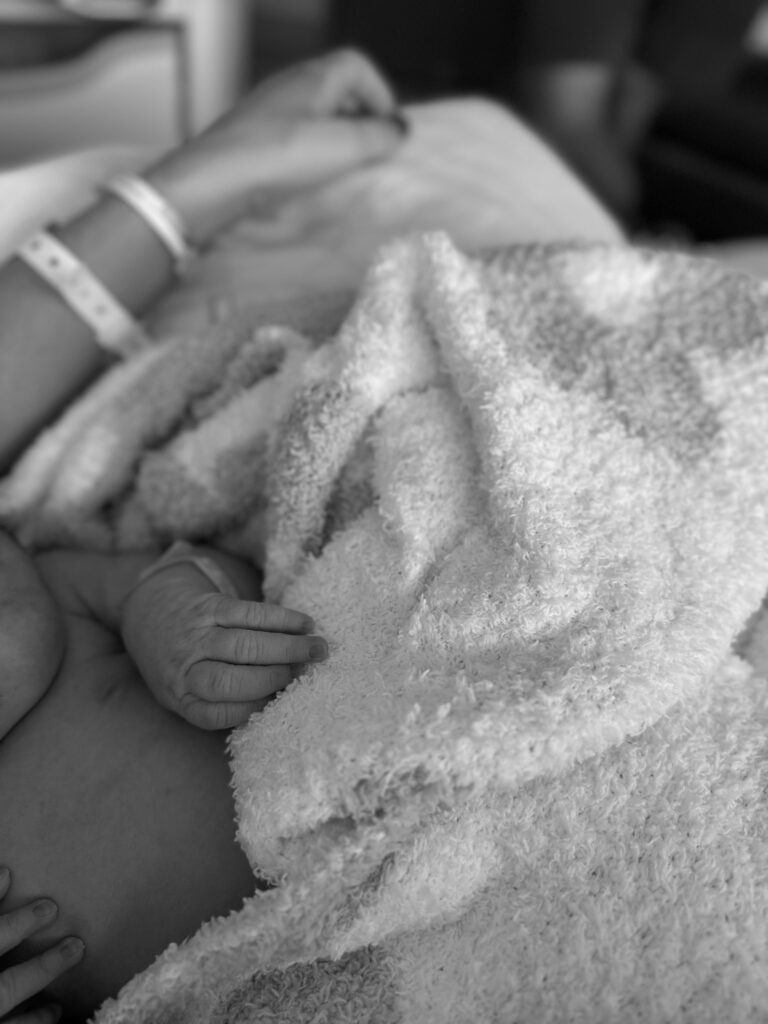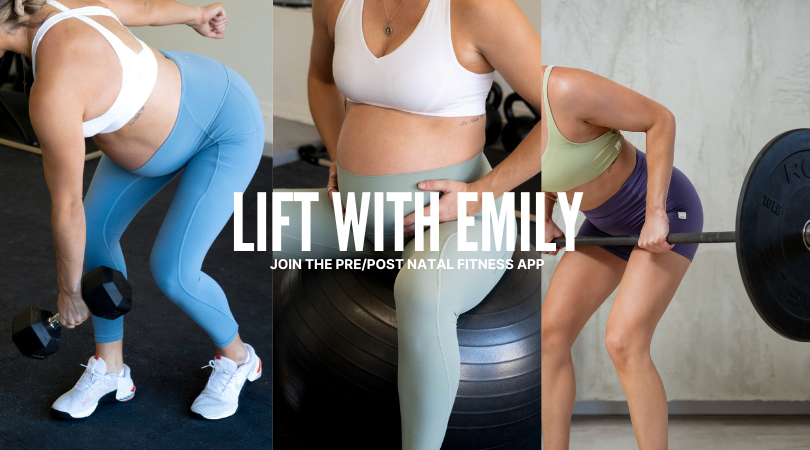When it comes to childbirth, there is no one-size-fits-all birth plan or a ‘best way’ to give birth. I support however you choose to give birth; home birth, unmedicated hospital birth, epidural, induction, planned c section etc. You have so many choices in how and where you’d like to bring your baby into the world. There’s a corner of the internet which will make you believe if you are not doing it a certain way, you are doing it wrong or will not have a positive experience. False.
There’s also this narrative floating around that you can’t have the birth you want in a hospital setting. Also false.

BENEFITS OF HAVING AN UNMEDICATED BIRTH
- Experiencing each sensation that comes with labor. This allows you to tune in to your body’s instincts
- Not being attached to an IV, constant fetal monitoring or epidural allows for more freedom of movement. With the help of both gravity and different positions you can help baby navigate and complete its rotation through the pelvis. Being confined to a bed and laying on your back may stall labor.
- Lower chance of intervention. Once the doctor intervenes it can become a cascade of things to get baby out. Pitocin, breaking waters, epidural, vacuum, forceps, emergency c-section.
- You have a stronger urge to push and can control these pushes vs being coached to bear down. With epidurals its common to see women hit 10cm but baby is still at a high station and rather than laboring down, they are coached to push. This then leads to a longer pushing time and the chances of becoming tired much quicker. You may also experience the fetal ejection reflex where your body expels the baby with no effort.
- Both lower intervention and a stronger urge to push can also translate into less pushing and less tearing.
- Epidurals comes with side effects; low blood pressure, headaches, fever, fetal distress, nausea, itchy skin.
- Quicker recovery (comparing my 2 births, one epidural one unmedicated, I can attest to this!!).
I do believe that being prepared with the suggestions listed below will help you have a birth with minimal interventions. Of course it’s important to note, birth is unpredictable and these are still not a guarantee of a specific birth outcome.
FIND THE RIGHT PROVIDER
It’s so important to choose a provider who you trust and supports your desires in an unmedicated birth. I encourage you to bring this conversation up early on in your pregnancy to gauge an idea of their response. It is totally okay to switch providers if you feel there is some hesitation from their end. Midwives, in particular, are very suited to take on patients who want an unmedicated birth due to their training and approach.
Higher risk pregnancies may come with restrictions in how you wish to birth. It’s best to talk this through with your provider to understand what these risks are and whether an unmedicated birth is realistic and achievable for you.
LEARN ABOUT PHYSIOLOGICAL BIRTH
Education is key. Learning about physiological birth can provide you with so much confidence and trust in your own body. The more you know about what to expect, the less room for fear there is too. When you understand the way birth is designed, how you body works, whats happening throughout, you’ll feel so much more confident to trust your intuition in the moment. It can also help you understand what positions can help, the risks/benefits/side effects of intervention , alternative approaches to pain relief and what you can say no to.
My provider was not on call during my birth and I ended up using the hospital doctor who did not support the low intervention birth I wanted. Although my birth was very fast (under 5 hours, with only 2 of them in the hospital and 45 mins of active labor), she did try to intervene on multiple occasions by asking to break my waters (I said no), check my cervix (I said no) and move me on to my back (I said no). I felt confident doing this based off of what I had learnt beforehand.
I recommend taking a basic childbirth education class (outside of what the hospital offers) and I personally loved listening to:
-Birthing Instincts Podcast
-Evidence Based Birth Podcast
PREPARE YOUR MIND
Release any fear or anxiety you may have around birth, especially in regards to pain. When you are fearful, you tense up in anticipation to pain and when your body is tense, pain can increase. This then tends to exacerbate discomfort and is known as a fear-tension-pain cycle.
When you’re fearful or anxious, you’re activating your body’s fight or flight mode and your bloodstream fills with adrenalin. Your fight mode causes you to tense your entire body. Your muscles will hold tension, you’ll clench your jaw and overall just struggle to relax. When your muscles are tension, everything hurts much more – like your contractions.
You’ll likely start to spiral in the moment “I’m only 4cm, this is so painful, how do I keep doing this?” or “that contractions was so much stronger than the last, I cant do this anymore”
So what to do as labor intensifies and you notice fear creep in?
Prior to birth, I made sure to shift my mindset on how I viewed pain. I thought of each contraction as an intense surge bringing me closer to baby and I started to tell myself that I was looking forward to birth. I believed this and I truly was.
Once in labor, I avoided cervical checks to as I knew that if my dilation did not match where my pain was at, doubt would likely start creep in about how I’m not progressing which in turn would lead me to question if I could do it. And for each contractions, I reminded myself that it would be over in 60 seconds and then I would get a break before the next. That the pain was temporary and each surge was bringing me closer to my baby.
PREPARE YOUR BODY
Your fitness levels do not determine a particular birth outcome. That being said, there are movements and exercises to do to prepare your body for birth (and postpartum).
- Pelvic and hip mobility that open all levels of the pelvis. Having range of motion in these areas can help with labor stalls
- Movements to relax your pelvic floor. Your pelvic floor does not need to be strong to push a baby out, in fact it needs to get out the way.
- Learned positions to do during labor so I felt confident and familiar moving into these positions intuitively during early and active labor.
- Followed my Strong in Pregnancy workout program for overall strength and fitness
NATURAL PAIN RELIEF TECHNIQUES
A unmedicated birth is largely mental and changing your state of mind to help you work through pain. It also does not mean you have to resign yourself to doing nothing to help you cope with pain or discomfort. Knowing your options for natural pain relief techniques can help you stay in a more positive head space, relax your mind and body and control your response to contractions.
Some examples:
- Tens unit
- Counter pressure techniques
- Getting in the bath tub or shower
- Changing positions frequently
- Breathing techniques
- Hynobirthing
- Words of affirmation from your partner
Birth is unpredictable. There is no right or wrong way to do and sometimes medical intervention, pain relief or C-sections are needed and necessary. However there are still ways you can prepare so you feel confident that a hospital environment supports your wishes.

I’m deeply passionate about helping women feel strong, informed, and confident through every stage of motherhood. You deserve more than just a list of do’s and don’ts or generic modifications. With years of hands-on coaching across all kinds of athletes and clients, I blend real-world experience with specialized pre and postnatal knowledge to create strength programs that go far beyond basic adjustments. This is high-level, accessible training - built for your body, your season, and your goals
EXPLORE MORE POSTS